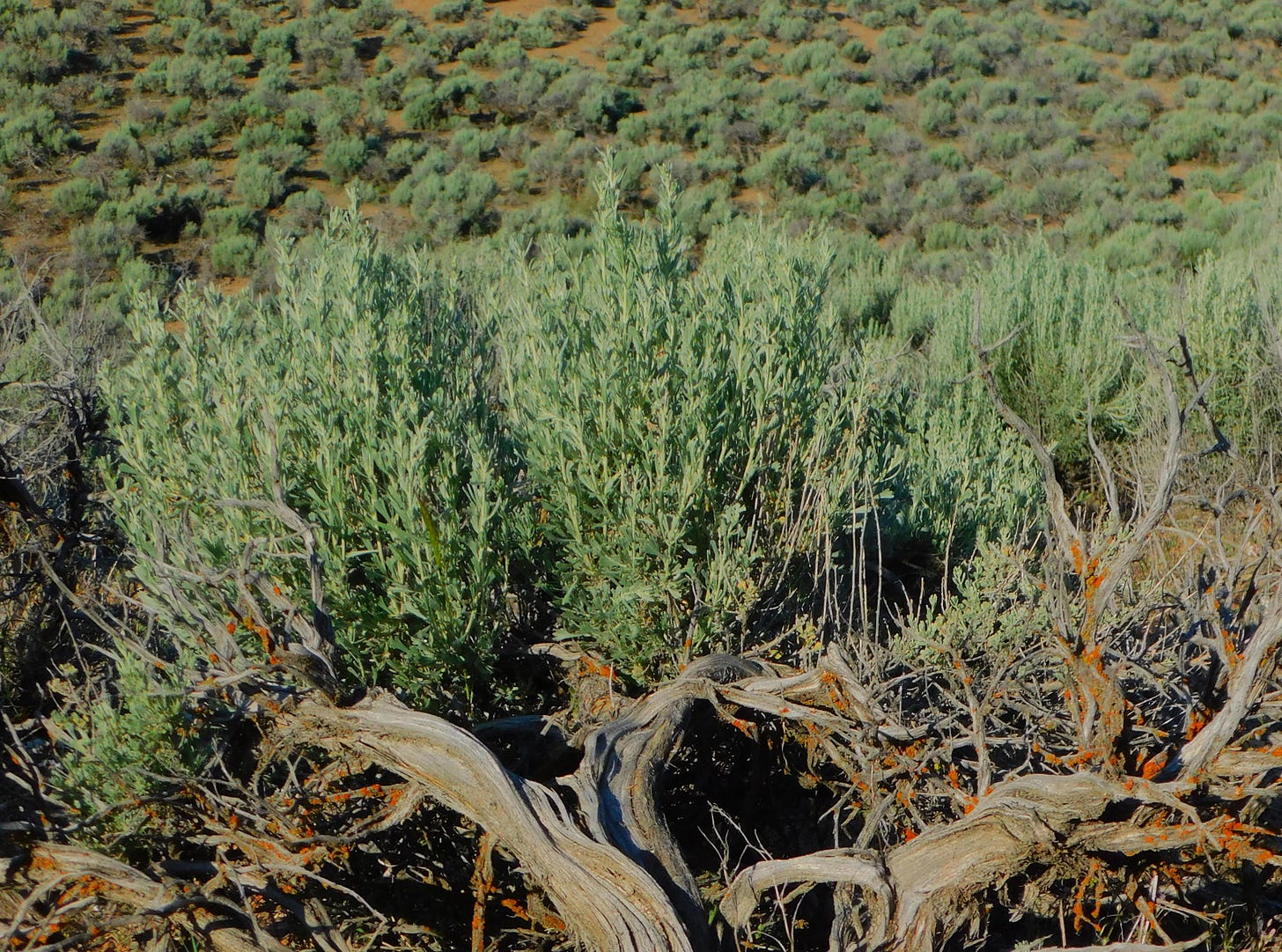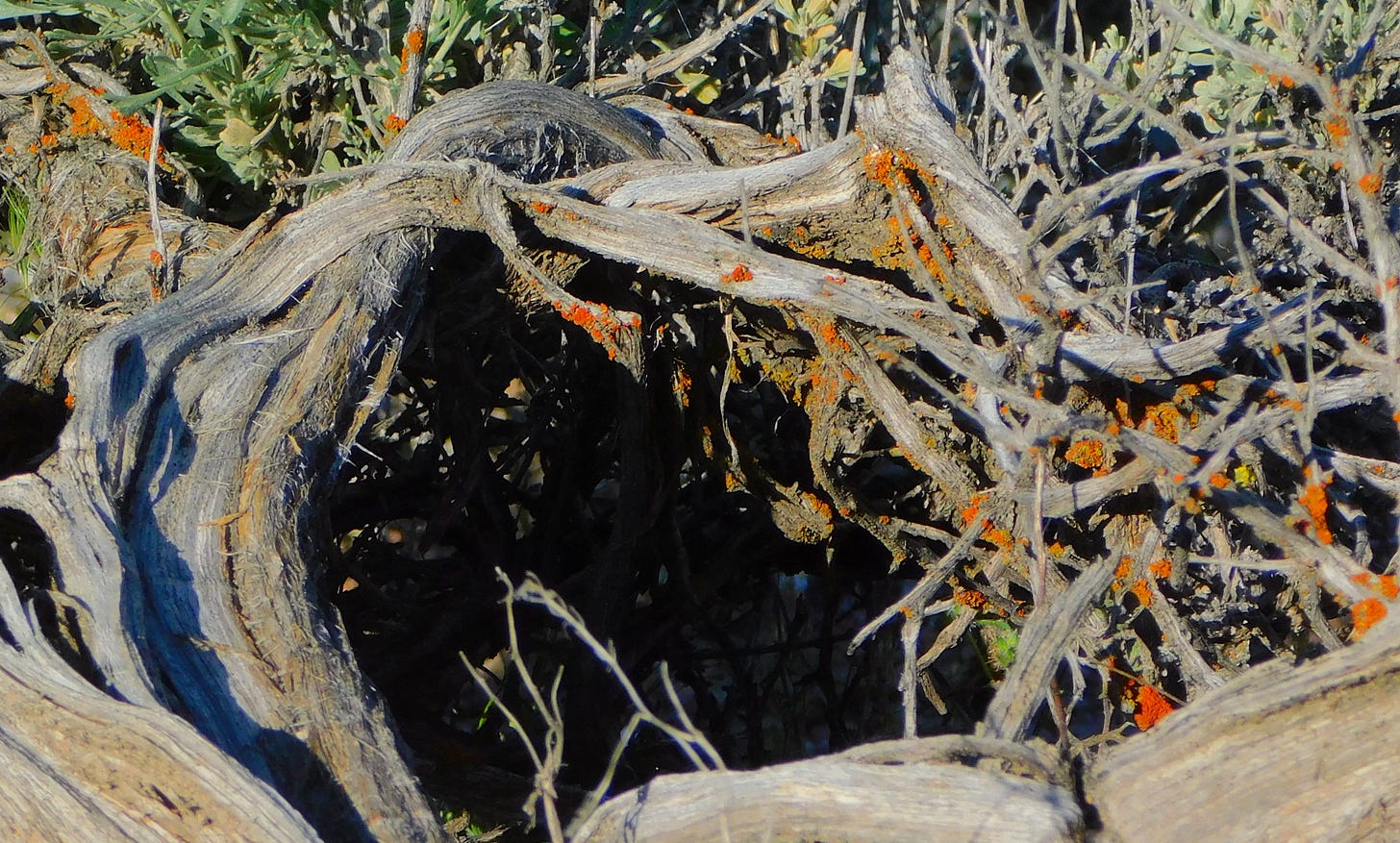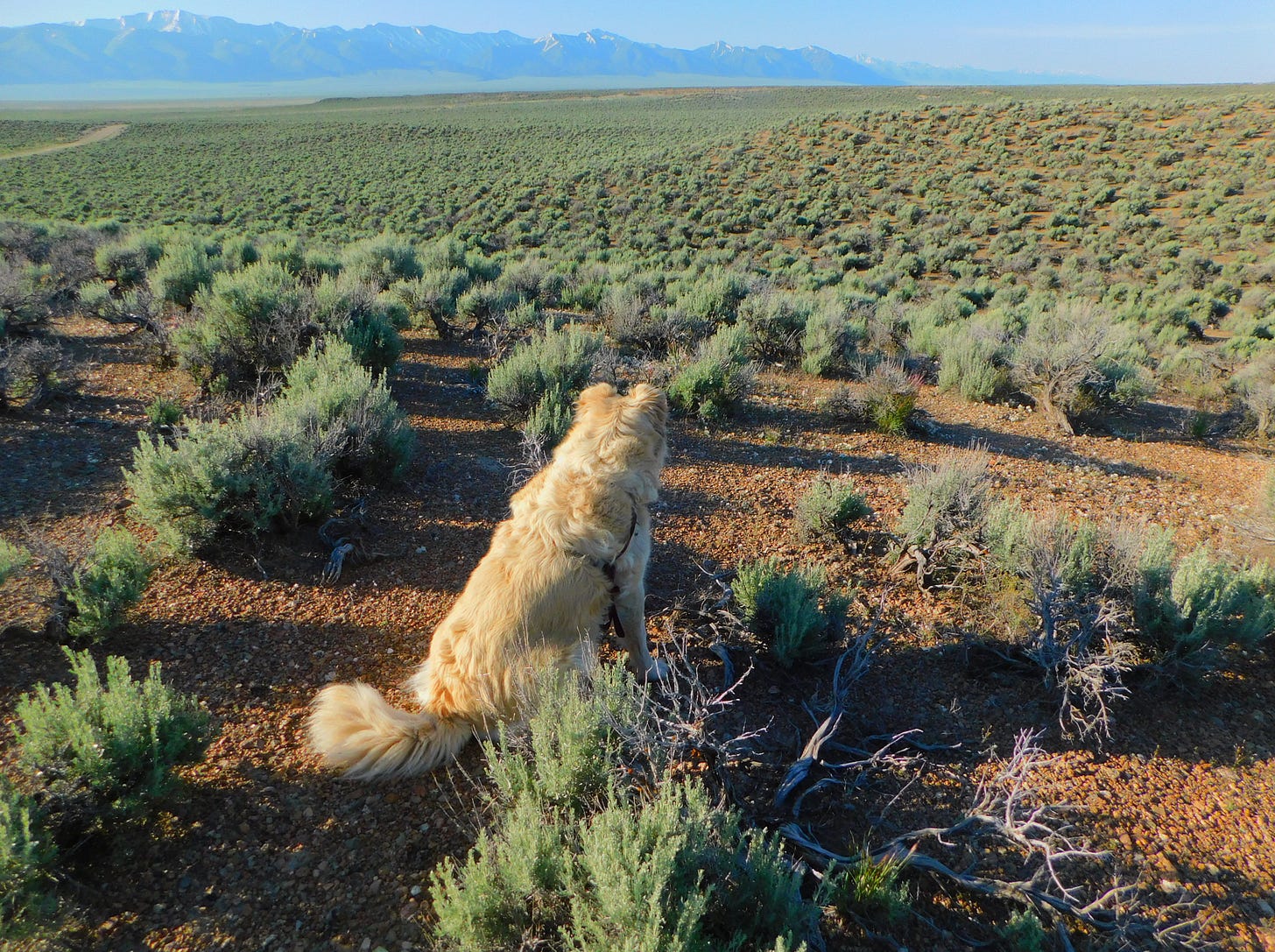“This is not—in that compressive manner—a ridge-and-valley situation. Each range here is like a warship standing on its own, and the Great Basin is an ocean of loose sediment…” — excerpt from John McPhee’s Basin and Range (Book 1 of Annals of the Former World [Farrar, Straus and Giroux: 1998])
“In a lot of valleys in Nevada all you will see is sagebrush, and not know that eight feet below you is an interesting story,” Duffeyes said, “I found late-Miocene horse teeth over there…” — also from John McPhee’s Basin and Range (Book 1 of Annals of the Former World [Farrar, Straus and Giroux: 1998])
One day early this summer, I awoke in a tent along a dirt road, somewhere between two mountain ranges, in a basin filled with sagebrush and birdsong. Learning the names of places and species was not my goal, though I acknowledge the value of labels that deepen understanding. I had a camera, and the desire to consider more closely the status of life forms uninterested in (though not unaffected by) human concerns. I was looking for an interesting story, awash in the sagebrush sea. Here is some of what I found…
Big Sagebrush (Artemisia tridentata) — individual plants can live for more than a century, and have taproots that reach 3 to 12 feet into the sediment layers that fill Great Basin valleys. Elders form miniature old-growth forests, gnarled limbs decorated by strips of bark, with bare wood colonized by lichens…
…the understory is a stage set constructed by organisms carrying out mundane, self- centered cycles of reproduction — sinking roots, blossoming, setting seed, senescence.
Each stage of my adult life contains periods of waking up to a much needed respite from the urgent cacophony of human endeavors. With a like-minded companion, I withdraw to an anonymous patch of dryland scrub, where we sit quietly for awhile and study the limits of our own horizons.
Despite the seemingly vast range of sagebrush-dominated habitat in the interior West, human-centered exploitation — industrialized agriculture, mineral extraction, energy production, population growth, motorized recreation, etc. — is sapping life from this sagebrush ‘sea,’ with current losses of over one million acres per year. Though once rare in sage-dominated habitat, in recent years wildfires have charred ever larger swaths of sagebrush, fed by rising temperatures and altered rain patterns, the incursions of non-native grasses and other plants introduced by livestock grazing practices, and other human activities. As one example, greater sage grouse habitat has been reduced by over 20% in the last 20 years, also affecting the viability of other species, including Golden Eagles. Below are images and links to two studies of conservation and restoration of sagebrush habitat, spanning nine states, and multiple management agencies.


It’s encouraging to keep in mind that despite all the losses, there are still an estimated 150 million acres of sage-dominated habitat in the the above regions, and life goes on within them. On recent visits I’ve discovered a fuzzy-looking rock to be a nest of baby sage grouse tucked in against a morning chill, and found a wildflower display dominated by the evening primrose photographed above. In addition to the federal and state agencies managing public land in sagebrush country (see links above and below), several non-governmental organizations have ongoing conservation and preservation efforts, and I’ll end with a couple of links that can expand your understanding and appreciation, while they urge you to take action.
Up next, between mountain ranges ‘standing like a warship’ — A Gemlike Oasis; Stages of Life, Part 3. Until then, let’s help each other enjoy this beautiful planet that is our home. - B.
Sagebrush Conservation Strategy—Challenges to Sagebrush Conservation is an in-depth analysis of conservation efforts, compiled by the US Geological Survey. A bit dry in parts, but cuts past the hyperbole of advocacy to practical challenges and possible solutions.
The Nature Conservancy has a graphically rich, easily digested look at their public/private efforts at sagebrush restoration, with a video:
Audubon’s page on the Greater Sage Grouse features a look at reductions in habitat tied to projected changes in temperature over the coming decades.
WildEarth Guardians’ campaign has a cool (if somewhat grainy) video of sage grouse displaying on a lek:













Thanks Thalia, for your message. I’m glad my words inspire your thoughts on these things. It’s a goal of mine to engage my readers, and to encourage thought and exploration of the topics I write about. I wish you happy and meaningful discoveries ahead!
B Frank- I appreciate the detailed on-hand description along with the ruminations on life. Especially: “Each stage of my adult life contains periods of waking up to a much needed respite from the urgent cacophony of human endeavors. “ This statement is both true and expansive in meaning.